 Someone riding one of Bilbao’s bike share bikes on a grade-separated “bizikletak” (cycle-track).
Someone riding one of Bilbao’s bike share bikes on a grade-separated “bizikletak” (cycle-track).
(Photos: Taylor Griggs/BikePortland)
— This post is part of BikePortland Staff Writer Taylor Griggs’ trip through Europe. See previous dispatches here.
Now that you have some background on Bilbao, Spain and its history of urban renewal via the Guggenheim Foundation, I want to share a bit more about this city. Like I said in the last story, Bilbao’s revitalization came with a hefty investment in public and active transportation and carfree public space across the city, which is evident to anyone walking around it today.
Here’s what I’ve stumbled upon in Bilbao so far.
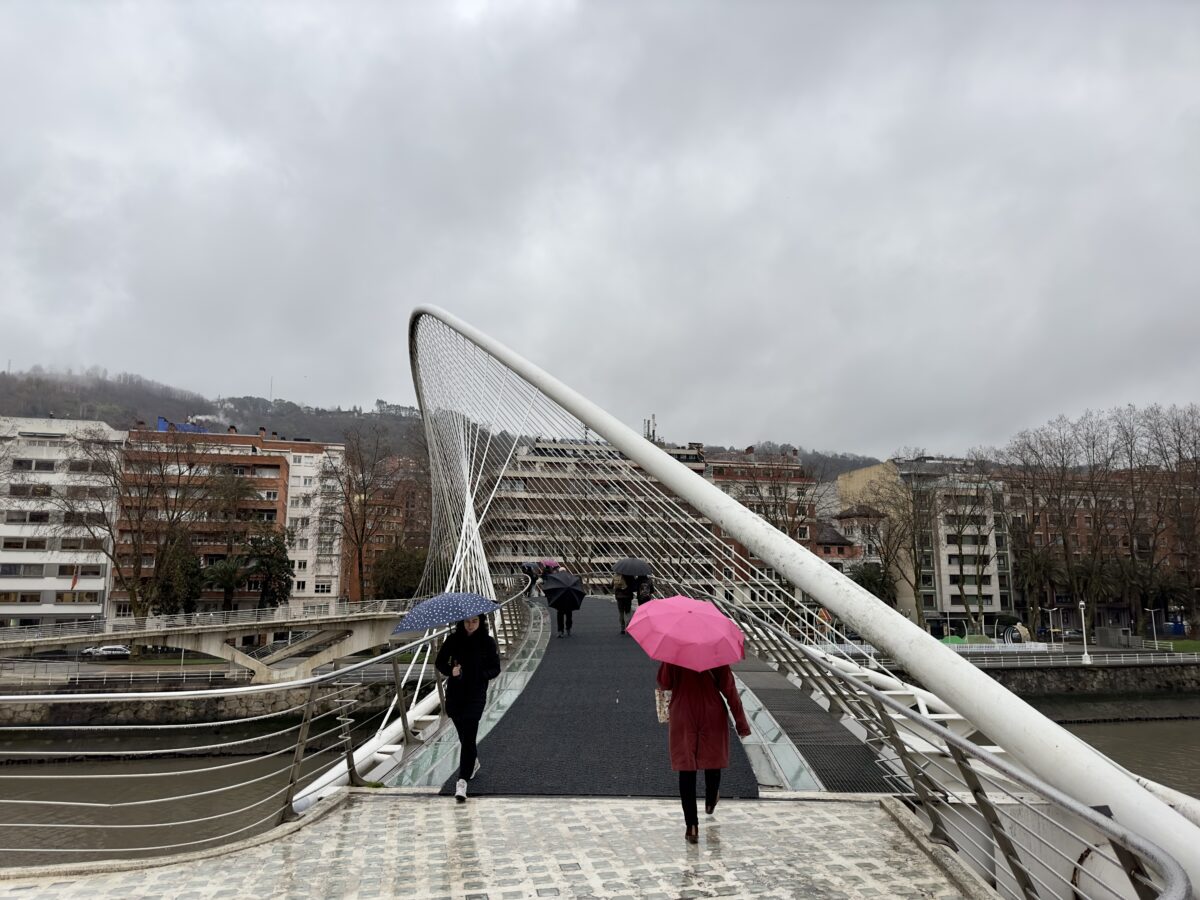 The Zuziburi bridge, which opened in 1997.
The Zuziburi bridge, which opened in 1997.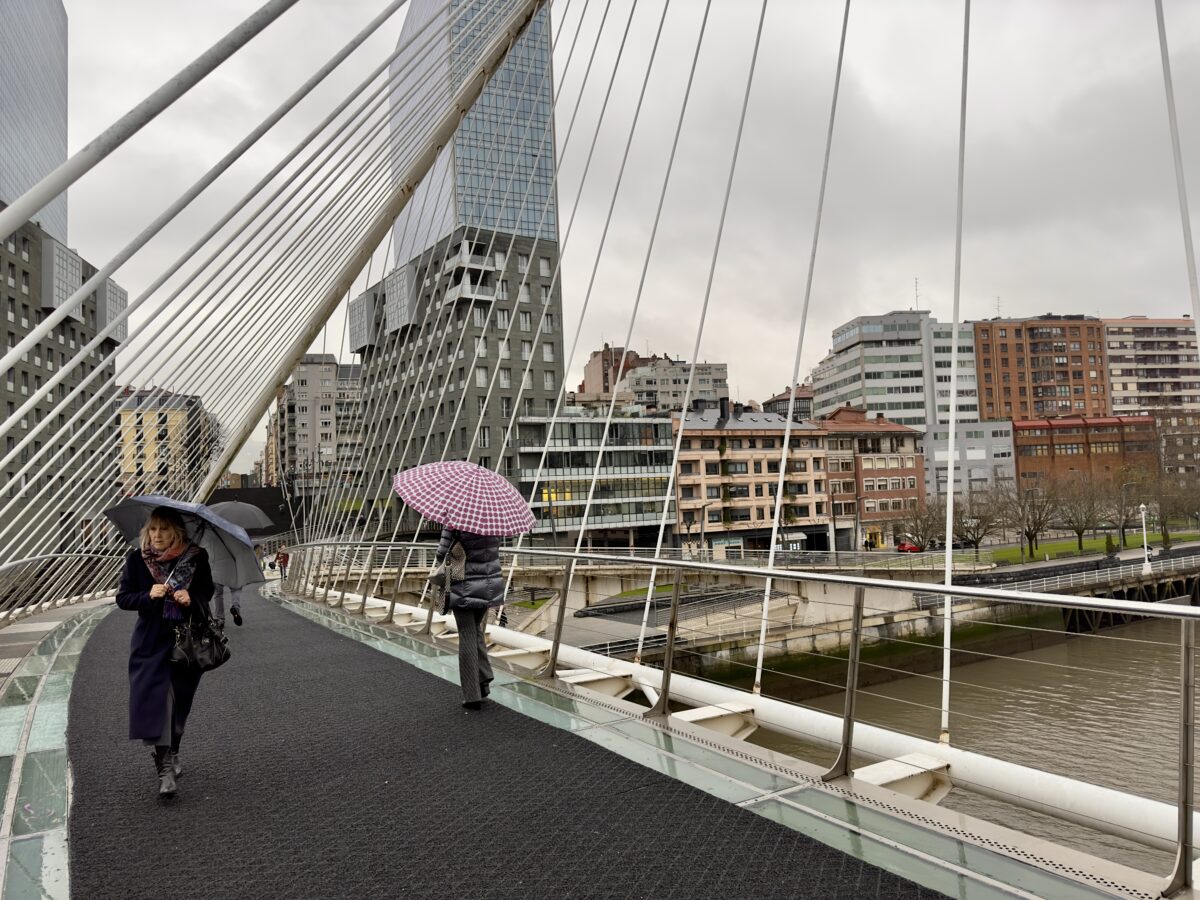

 The more understated Pedro Arrupe bridge.
The more understated Pedro Arrupe bridge.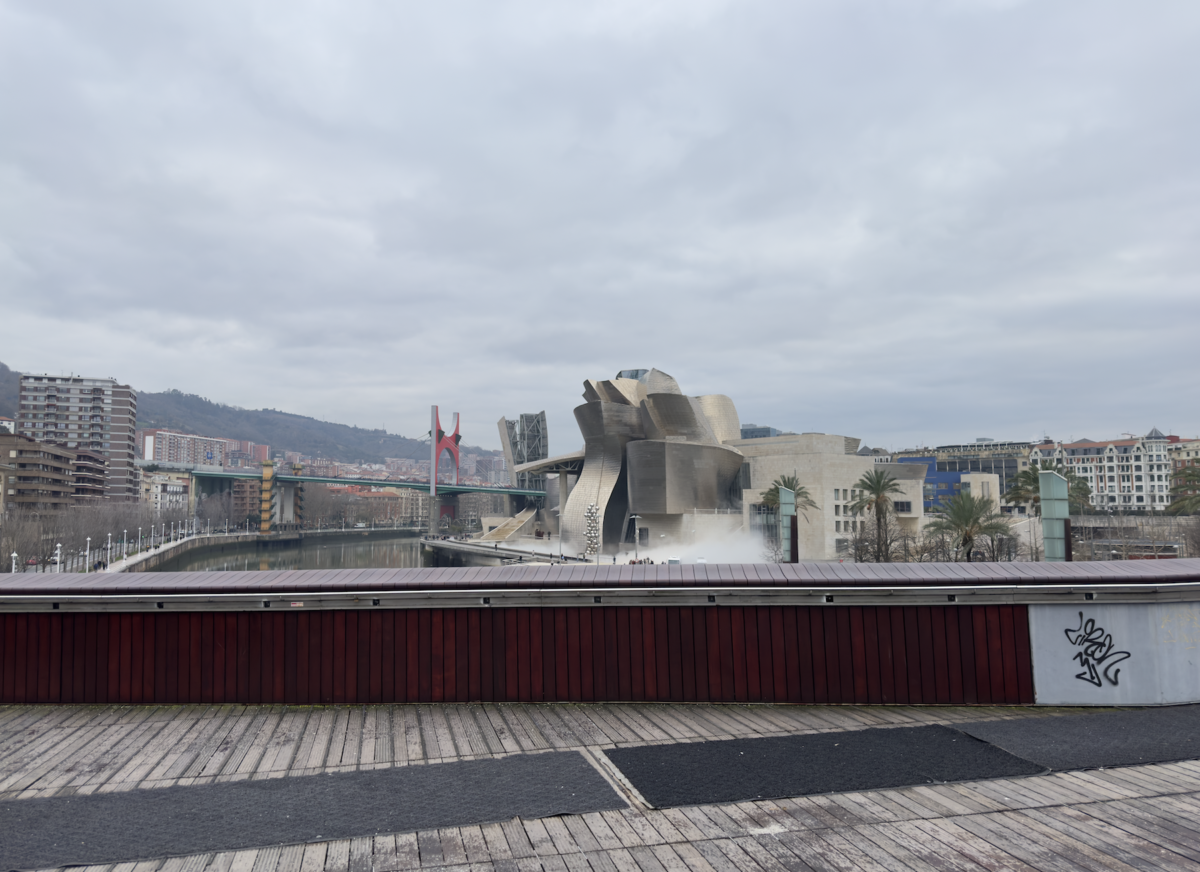 View of the Guggenheim from the Arrupe bridge.
View of the Guggenheim from the Arrupe bridge.
Carfree bridges
The Zuziburi pedestrian bridge had its grand opening in Bilbao around the same time the Guggenheim Museum was completed, adding another architecturally distinctive element to the small city’s skyline. Like the museum, the bridge came with some controversy when it first opened. In this case, it was because it had a glass deck that caused people to slip and slide whenever it rained. But now it has a non-slip surface, making it much safer, if a bit less aesthetically appealing than its designer had in mind.
There’s also the wood-lined Pedro Arrupe Footbridge not far from the Zuziburi serving as another way for people walking and biking to get across the Nervión river to the other side of town.
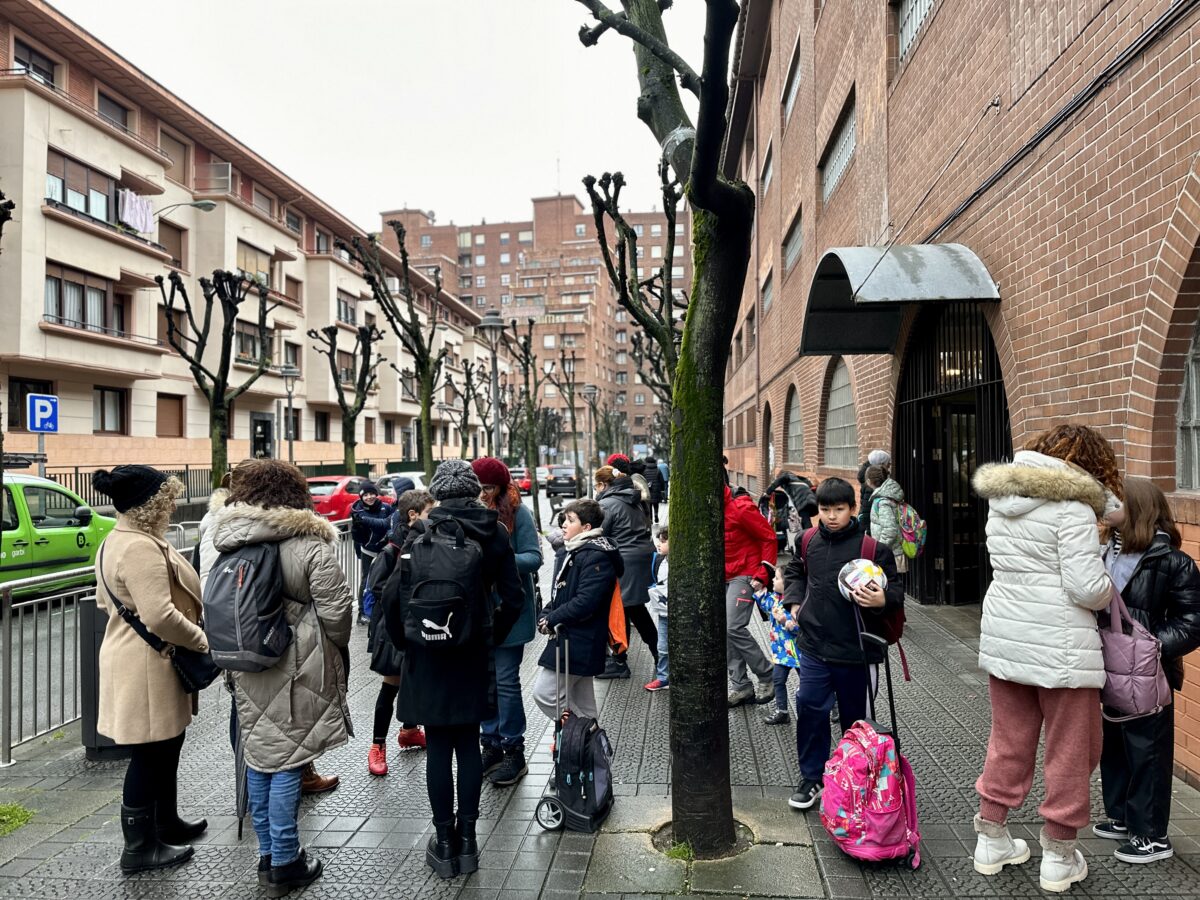 Pedestrian traffic is hopping at school pick-up time.
Pedestrian traffic is hopping at school pick-up time. The trams on grassy tracks get me every time. And note how little space is given to driving!
The trams on grassy tracks get me every time. And note how little space is given to driving!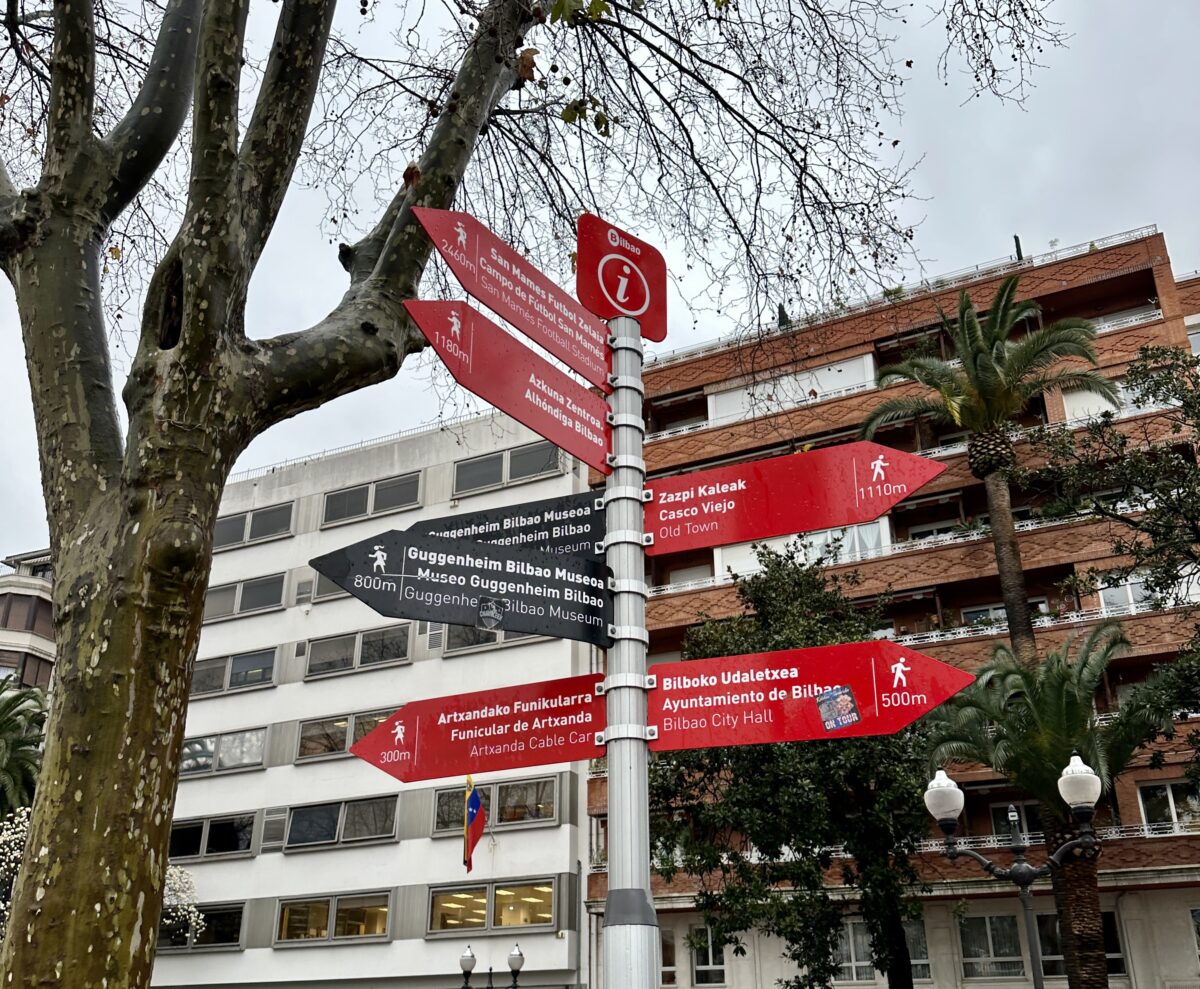 Wayfinding signs for people on foot are everywhere in the city.
Wayfinding signs for people on foot are everywhere in the city.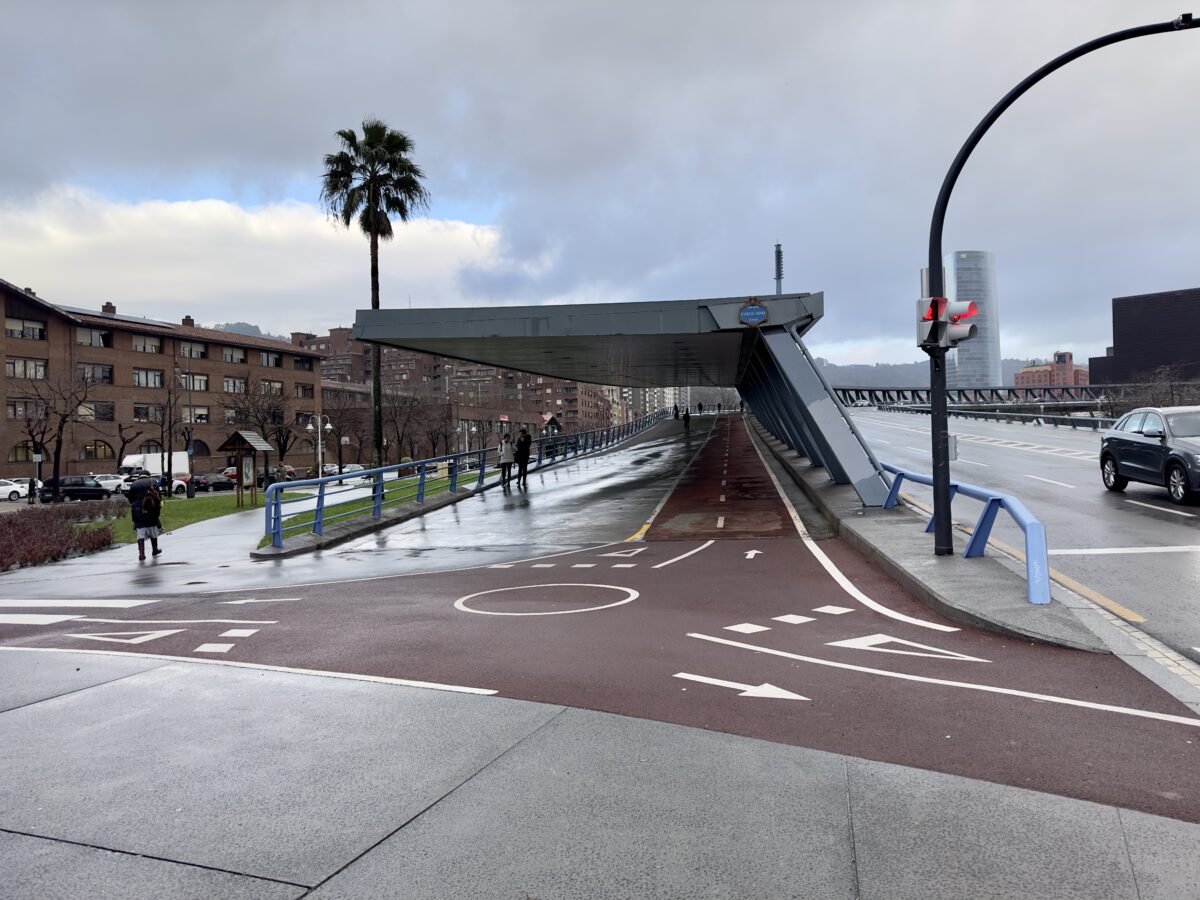 A bike roundabout, Bilbao-style.
A bike roundabout, Bilbao-style. People getting ready to go up the incline tram.
People getting ready to go up the incline tram.Getting around
Bilbao is huge on walking — about 62% of all trips are made on foot. But there’s a growing population of cyclists here, too. The city has a bike share program, Bilbaobizi, but it’s only available to residents and getting access requires an in-person appointment. There’s also an impressive network of bike lanes, often grade-separated from car traffic and sometimes even accompanied by Dutch-style bicycle roundabouts at intersections.
The city’s public transit network includes buses, a metro system and trams — including an inclined tram for getting up the city’s mountainous areas. (Can you imagine an incline up Portland’s hilly westside?)
 A very interesting net playground outside the Guggenheim.
A very interesting net playground outside the Guggenheim. A carfree street, complete with a lovely street mural and some other installments.
A carfree street, complete with a lovely street mural and some other installments.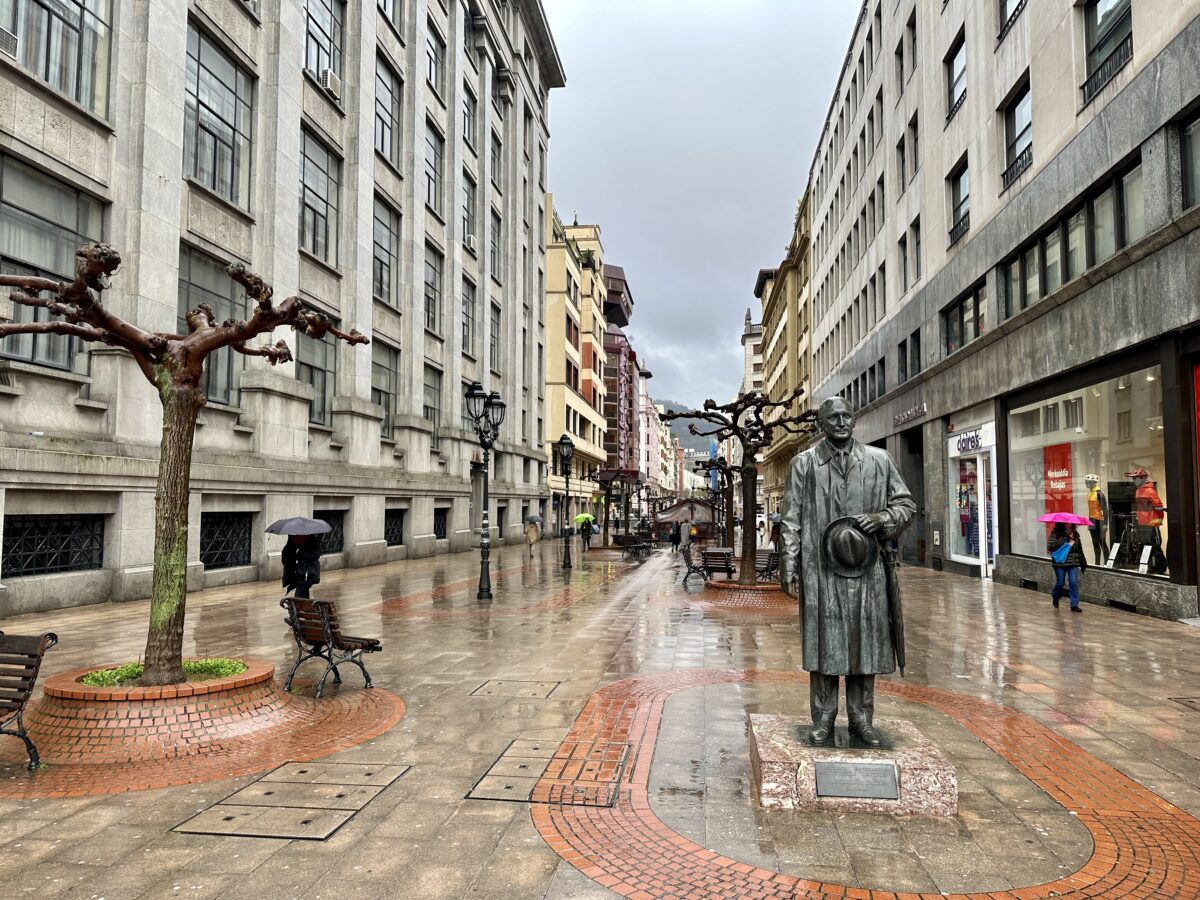 Another plaza space.
Another plaza space. A covered playground so kids can still play when it’s raining out.
A covered playground so kids can still play when it’s raining out.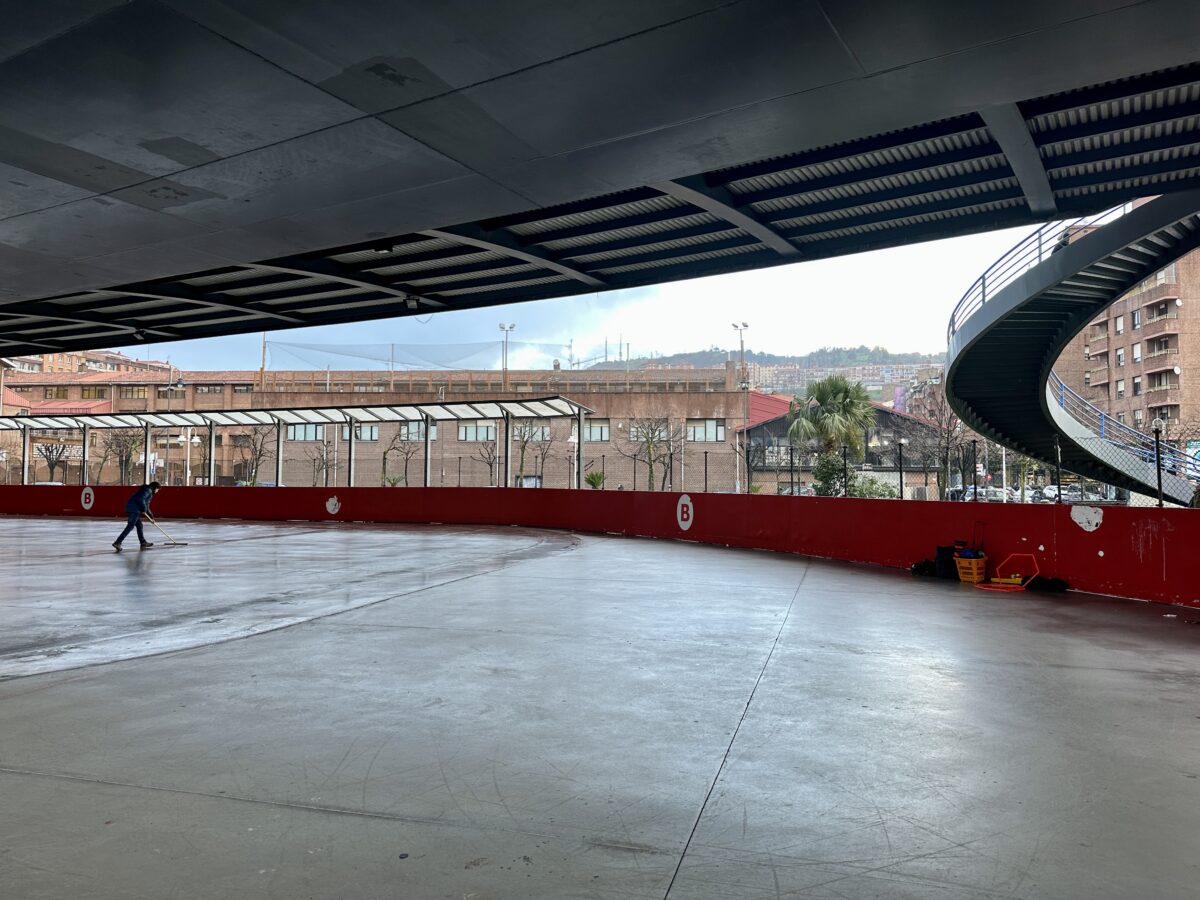 Someone mopping down a covered skating rink under a bridge.
Someone mopping down a covered skating rink under a bridge. A big, picturesque park in Bilbao’s city center.
A big, picturesque park in Bilbao’s city center.Public play places (for all ages)
I pointed out my fondness for the carfree plazas, parks and playgrounds I saw in Amsterdam and Copenhagen, and the trend continues here in Bilbao. The importance of these public spaces is one of the key things I’ve learned on this trip. They’re so crucial to a city’s livability for residents and are tourist crowd-pleasers, too.
Overall, I have been very impressed by this city. Tomorrow I’m off to Barcelona, in part to ride with the bicíbus, and then I’ll be back in Portland next week! Thanks for following along, it’s been fun to be able to share this with you.

Taylor has been BikePortland’s staff writer since November 2021. She has also written for Street Roots and Eugene Weekly. Contact her at This email address is being protected from spambots. You need JavaScript enabled to view it.

